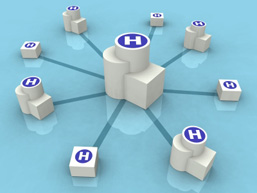Healthcare IT News
SPONSORED
Collaborative care offers tremendous benefit for patients, but demands PHI accessibility across the complex healthcare environment and across multiple users and locations. Information sharing without the worry of unauthorized access or a data breach is critical to ensure patient trust and avoid regulatory fines.
In a business that’s constantly changing with new technologies, such as cloud and BYOD, and offering new ways of interacting with patients and providers, the need for secure access to patient data is critical.
Download the latest RSA white paper, “Cybercrime and the Healthcare Industry,” to learn about the latest cyber threats targeting patient data and key areas of consideration in implementing security and access controls to address HIPAA, Meaningful Use, and other regulations.
SPONSORED
The business model of most hospital and independent laboratories will be challenged by Meaningful Use Stage 2 (MU2). Each laboratory will need to think beyond its traditional role of a simple outreach and revenue center. MU2 raises the bar for lab data and clinical laboratories must play a significant role in coordinated care and decision support. Further, MU2 stands to change the nature of EHR-LAB connectivity in the U.S., with much tighter integration being required. Many laboratories may find that they lack the skill set and tools for LOINC, and that their LIS is not up to the task. As a result, laboratories will need start working immediately to take a much more active role in leading, defining, and participating in coordination EHR efforts within their community.
SPONSORED
Atlantic Health System is leading the way in connecting healthcare providers with one another and with patients to help improve care coordination and patient engagement. Increasing levels of clinical connectivity in parallel with improved financial connectivity are driving better care and better financial outcomes. Read Atlantic Health’s story to learn about the incremental steps taken to establish the Jersey Health Connect HIO and about revenue cycle process improvements to improve financial performance via a relationship with RelayHealth.
SPONSORED
Now more than ever before, physicians use mobile technologies such as tablets and smartphones within their practice to bolster patient care, improve productivity, access EMRs and conduct video patient consultations. IT managers are then faced with the challenge of investing in a future-proof infrastructure, capable of handling gigabit capacities in order to avoid network bottlenecks over disparate facilities. Learn how healthcare institutions across the nation successfully solved their bandwidth challenges with a high-performance, HIPAA-compliant wireless connectivity solutions quickly, easily and cost-effectively.
SPONSORED
As hospitals adopt and expand mobile computing strategies, power systems are critical to ensuring caregivers access the information they need, shift after shift, where it matters most – at the point of care. The marketplace is filled with competing claims about which factors matter most. To help hospital decision makers evaluate their options, here are seven questions to ask in evaluating mobile computing workstations, primarily focused on power systems.
SPONSORED
EHRs were projected to reduce the need for transcription. However, with slower than anticipated adoption of EHRs by providers coupled with concerns about quality and fear of inaccurate documentation and over-billing due to inappropriate copy/paste and template use, there is still a demand for transcription technology and services. A skilled medical transcriptionist can be the economical choice when faced with passing time-consuming tasks on to the most expensive person in the documentation workflow – the physician – and can serve as the extra pair of eyes to validate structured and encoded data intended for consumption by the EHR.
SPONSORED
Without connectivity, care coordination just won’t happen. Achieve clinical integration and improve care coordination. NextGen™ Health Information Exchange allows you to connect the dots, gain the ability to share patient information and track quality improvement. Make the connections that put you on a winning path toward collaborative care. Download our whitepaper to discover insider tips to creating an HIE that: Improves clinical integration; Enhances patient safety; Achieves enterprise, community, and statewide healthcare connectivity.






